From the UC Blogosphere...
Riverside supervisors to include UC Riverside on new ag trail map
The Riverside County Board of Supervisors approved development of a local "Ag Trail" to promote California's 12th largest agricultural industry, according to a report in Valley News.
The online and printed Ag Trail map will locate many of the county's 1,700 dairies, farms, ranches, wineries, farmers markets, historical and cultural points of interest and UC Riverside agricultural research facilities.
"The idea is to promote agriculture, to promote the purchase of our products," said Tom Freeman, spokesman for the county Economic Development Agency. "We would target international visitors, domestic guests and our own residents."
Officials are aiming to complete the map by February 2013.
What's That Bug?
Lynn Kimsey knows her bugs. Kimsey, director of the Bohart Museum of Entomology and professor of entomology at the...
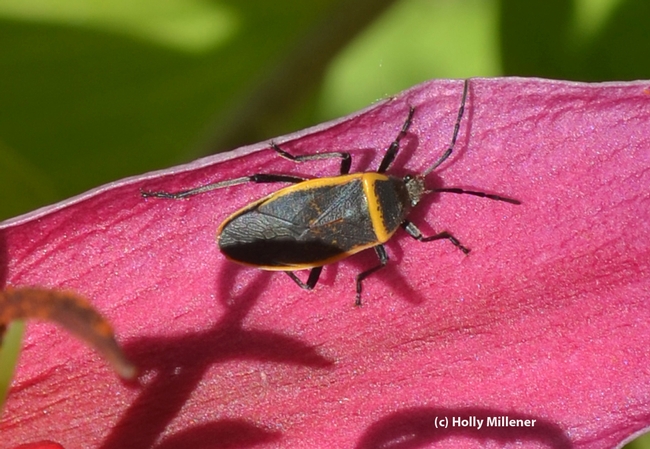
This "mystery bug" is a largid in the group of insects called bordered plant bugs, says Lynn Kimsey, director of the Bohart Museum of Entomology. (Photo by Holly Millener)
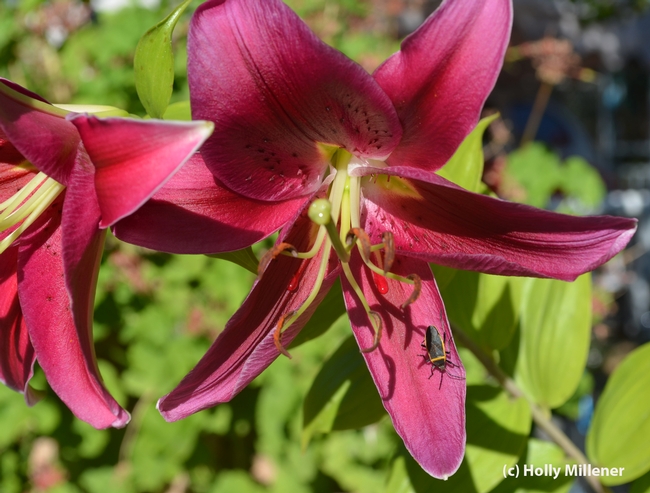
Bordered plant bug on a lily in an Oroville yard. (Photo by Holly Millener)
These Colors Didn't Run
We've seen bumble bees, honey bees, sweat bees, wool carder bees and syrphid flies topple into our swimming pool, but...

Alfalfa butterfly, Colias eurytheme, lands in a swimming pool. (Photo by Kathy Keatley Garvey)
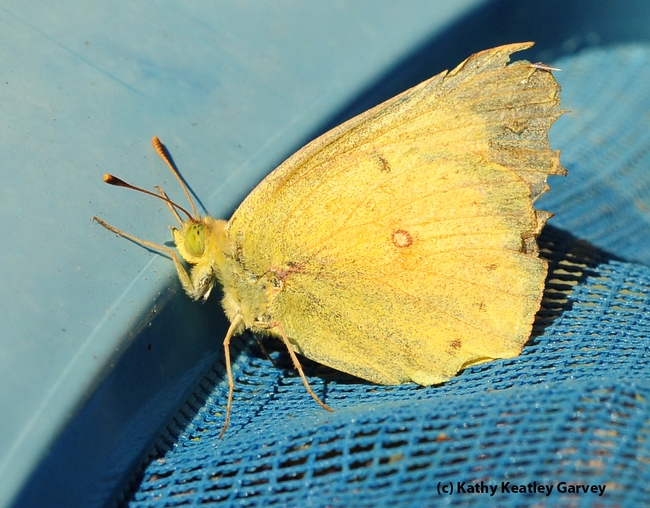
Fished out of the pool, the alfalfa butterfly rests on the net. (Photo by Kathy Keatley Garvey)
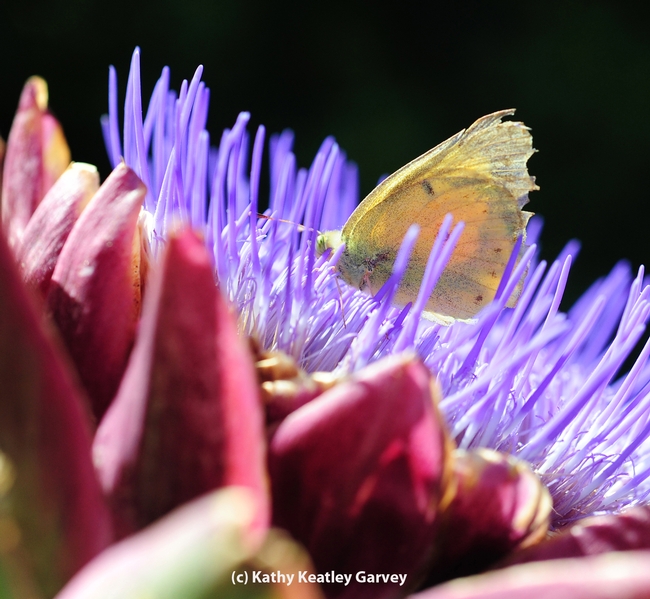
Placed atop a flowering artichoke, the alfalfa butterfly dries its wings. Several minutes later it fluttered away. (Photo by Kathy Keatley Garvey)
California's dry winter is leaving west side cattle hungry
The long rainless winter resulted in grass growth on the west side of the San Joaquin Valley about 80 percent less than usual, reported John Holland in the Modesto Bee. Spring rain pushed somewhat more growth on the valley's east side, which was charted at 55 to 70 percent less than normal.
Theresa Becchetti, UC Cooperative Extension advisor in Stanislaus and San Joaquin counties, a livestock expert, and Diana Waller, district conservationist for the U.S. Natural Resources Conservation Service, reported the conditions in a letter last month to county and federal agriculture officials.
Fall 2011 rain helped germinate seeds, but "unfortunately, that is where it ended," they wrote.
A cattle producer quoted in the story said the poor feed conditions are offset somewhat by beef prices that have remained strong.
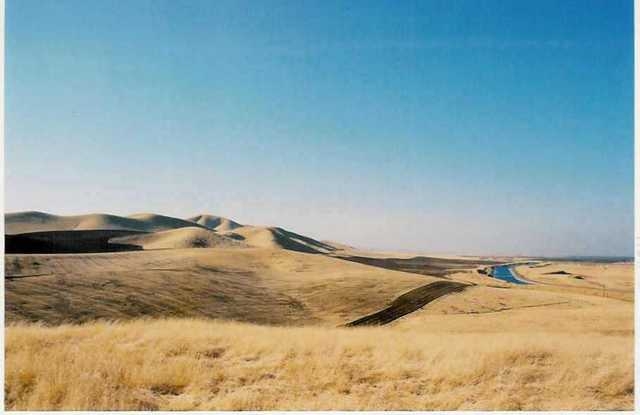
The USDA reported that nonirrigated range condition was poor to fair, with some higher-elevation range in good to fair condition.
Bee-ing Young
Pity the poor worker bee. In the spring/summer months, she lives only four to six weeks and then she dies. Bee scientists...
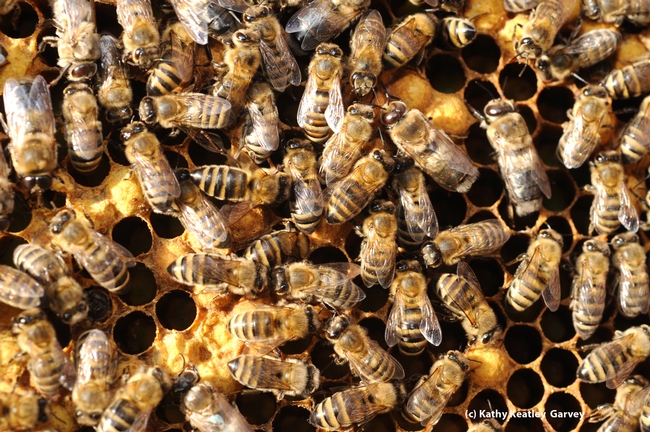
Worker bees working inside the hive. (Photo by Kathy Keatley Garvey)
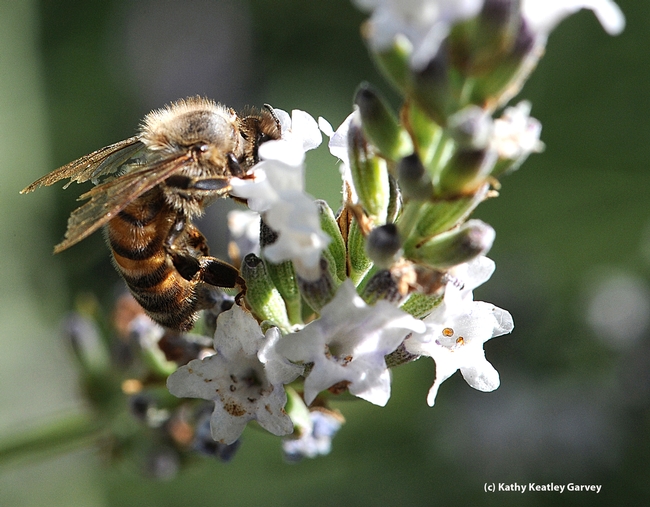
This worker bee, with tattered and torn wings, still keeps foraging. (Photo by Kathy Keatley Garvey)








